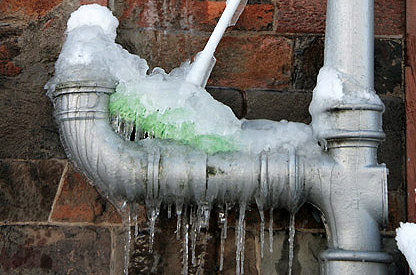Ways to Protect Your Pipes from Cold Weather: Specialist Advice
Ways to Protect Your Pipes from Cold Weather: Specialist Advice
Blog Article
The content down the page relating to 6 Ways to Prevent Frozen Pipes is indeed insightful. You should take a peek.
.jpg)
Winter can damage your pipes, especially by freezing pipes. Here's just how to avoid it from occurring and what to do if it does.
Intro
As temperatures decline, the danger of icy pipes rises, potentially bring about costly fixings and water damages. Comprehending just how to avoid icy pipes is essential for home owners in cold climates.
Prevention Tips
Shielding susceptible pipelines
Cover pipelines in insulation sleeves or utilize warm tape to secure them from freezing temperatures. Concentrate on pipes in unheated or outside locations of the home.
Home heating methods
Maintain indoor areas appropriately warmed, specifically locations with plumbing. Open cabinet doors to permit cozy air to flow around pipelines under sinks.
Just how to identify frozen pipelines
Look for decreased water flow from taps, unusual odors or sounds from pipes, and visible frost on revealed pipelines.
Long-Term Solutions
Architectural modifications
Think about rerouting pipes far from outside walls or unheated areas. Include additional insulation to attics, cellars, and crawl spaces.
Upgrading insulation
Purchase high-quality insulation for pipelines, attic rooms, and walls. Appropriate insulation helps maintain regular temperature levels and decreases the danger of frozen pipelines.
Securing Outdoor Pipes
Garden hose pipes and outside taps
Separate and drain pipes garden pipes prior to winter season. Set up frost-proof spigots or cover exterior taps with shielded caps.
Understanding Icy Pipes
What causes pipes to ice up?
Pipes ice up when subjected to temperature levels below 32 ° F (0 ° C) for extended periods. As water inside the pipelines freezes, it increases, putting pressure on the pipeline walls and potentially triggering them to rupture.
Risks and damages
Icy pipes can cause supply of water disturbances, residential property damage, and costly repair work. Ruptured pipelines can flood homes and trigger considerable architectural damage.
Signs of Frozen Water Lines
Identifying frozen pipes early can avoid them from bursting.
What to Do If Your Pipelines Freeze
Immediate actions to take
If you suspect frozen pipes, keep taps open up to relieve pressure as the ice melts. Use a hairdryer or towels soaked in warm water to thaw pipelines gradually.
Final thought
Avoiding frozen pipelines requires proactive procedures and quick feedbacks. By comprehending the causes, indications, and preventive measures, home owners can safeguard their pipes throughout cold weather.
6 Proven Ways to Prevent Frozen Pipes and Protect Your Home
Disconnect and Drain Garden Hoses
Before winter arrives, start by disconnecting your garden hoses and draining any remaining water. Close the shut-off valves that supply outdoor hose bibs and leave the outdoor faucet open to allow any residual water to drain. For extra protection, consider using faucet covers throughout the colder months. It’s also important to drain water from any sprinkler supply lines following the manufacturer’s directions.
Insulate Exposed Pipes
Insulating your pipes is an effective way to prevent freezing. Pipe insulation is readily available at home improvement stores and is relatively inexpensive. Pay close attention to pipes in unheated areas such as the attic, basement, crawl spaces, or garage. Apply foam insulation generously to create a buffer against the cold. You can also wrap your pipes in heat tape or thermostat-controlled heat cables for added warmth.
Seal Air Leaks
Inspect your home for any cracks or openings that could let in cold air. Seal any holes around the piping in interior or exterior walls, as well as the sill plates where your home rests on its foundation. Additionally, make sure to keep your garage door closed unless you’re entering or exiting. Leaving it open creates a significant air leak that can lead to frozen pipes.
Allow Warm Air Circulation
During cold snaps, it’s essential to allow warm air to circulate evenly throughout your home. Leave interior doors ajar to promote better airflow. Open kitchen and bathroom cabinets to help distribute heat consistently around the rooms. If you have small children or pets, be sure to remove any household chemicals or potentially harmful cleaners from open cabinets for safety.
Let Faucets Drip
A small trickle of water can make a big difference in preventing ice formation inside your pipes. When temperatures drop significantly, start a drip of water from all faucets served by exposed pipes. This continuous flow helps prevent the water from freezing. Additionally, running a few faucets slightly can relieve pressure inside the pipes, reducing the chances of a rupture if the water inside does freeze.
https://choateshvac.com/6-proven-ways-to-prevent-frozen-pipes-and-protect-your-home/

I hope you enjoyed our part about Helpful Tips to Prevent Frozen Pipes this Winter. Thank you for spending some time to read through our posting. Loved our posting? Please quickly share it. Let other people find it. Kudos for being here. Return soon.
Free Estimates Report this page